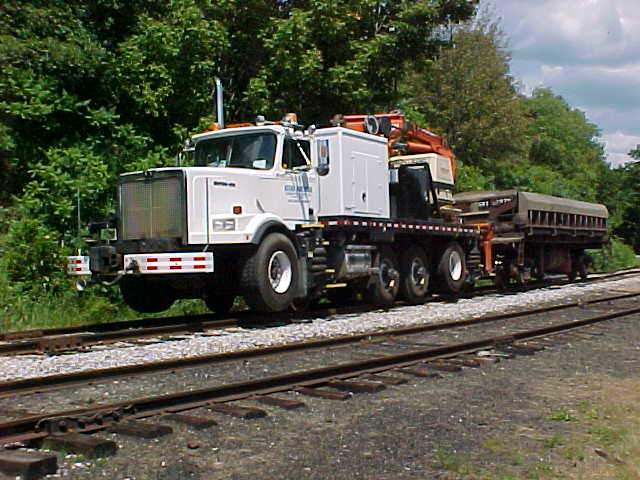I've only seen a few road/rail-capable vehicles that would shunt crossing circuits, so as mentioned above, they do stop-and-protect. I've seen even the very few trucks (not ballast regulators, etc.) that would trigger crossing signals stop at least until the operator knew the active warnings were working reliably and that highway users were stopping. On lightly-used lines, they might not get good continuity through any rust, etc.
I think anything that's not a locomotive is exempted from the requirements of 49 CFR 222, Use of Locomotive Horns at Public Highway-Rail Grade Crossings, by this language in §222.9: "
Locomotive means a piece of on-track equipment
other than hi-rail, specialized maintenance, or other similar equipment" [Emphasis added.] But if you don't have reliable activation of signals and/or the horn and bell, or "on-ground warning" as in NORAC Rule 138, then traffic on the rail should yield to road traffic.
The first truck I ever saw that would trip crossing signals was this one:

Anything big enough to have a coupler on both ends should probably have a substantial horn on it, and there's one under the front bumper as well as the one on the cab roof.
